Atomic Heart Review
Robots and red flags
New games can give players a newfound appreciation for older titles. It is easier to reflect on the greatness of old games when a newer and poorer imitation appears. Atomic Heart is a first-person shooter from Mundfish that shares a few characteristics with BioShock, as it features another scientific utopia that goes to hell. But it comes up lacking in comparison. The most optimistic view might see it as a clumsy action game with interesting hostile robots, set in an appealing post-war Soviet Union setting. Those with a more critical eye will spot a poorly delivered story, padded out with unnecessary open-world sections and tedious mechanics. Atomic Heart has many red flags, and some are more of a problem than others.
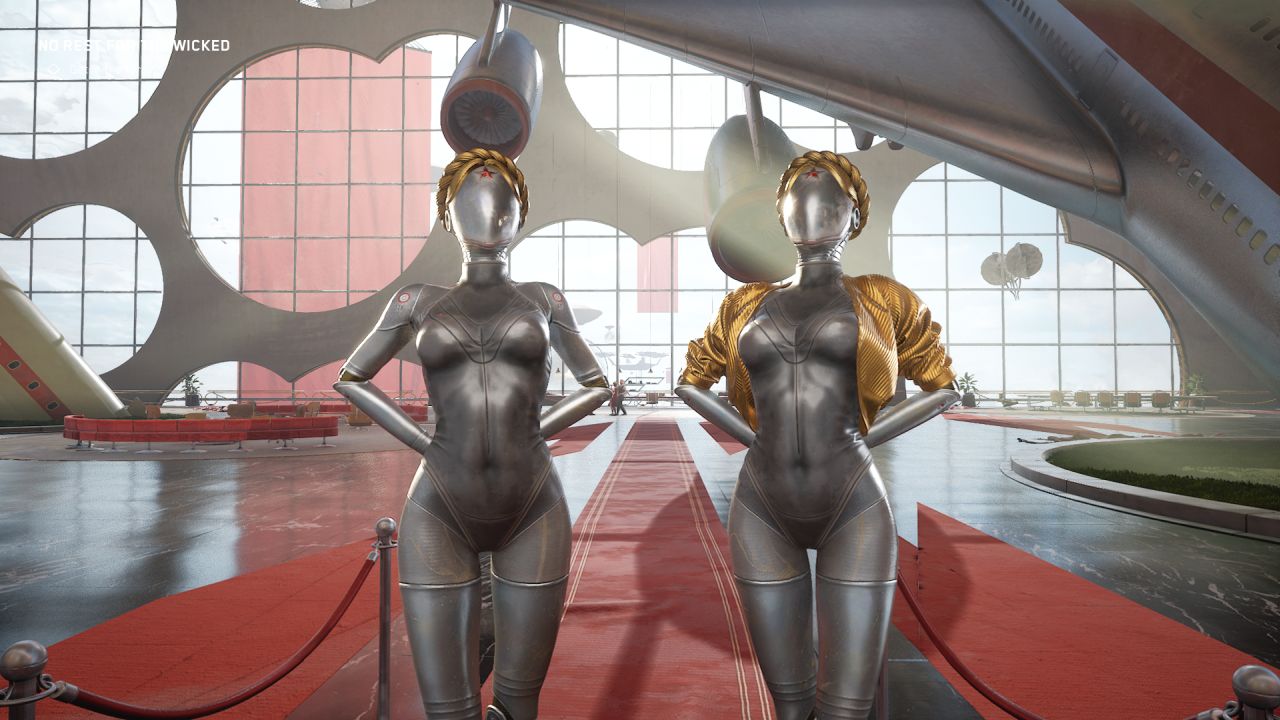
The robots of Facility 3826 are a highlight
Speaking of red flags, Atomic Heart is set in the Soviet Union during 1955, not long after the Second World War. In this alternate version of history, the Soviets are a world-leader in science and technology, and they are about to unleash Kollektiv 2.0 on the willing populace. Kollektiv 2.0 allows humans to command robots with neural implants, and download knowledge directly into their brain. You play as Agent P-3 and attend a launch ceremony at the birthplace of Kollektiv 2.0—called Facility 3826—under orders from the head of the project. This intro provides an excellent overview of the facility in a style similar to Half-Life 1’s train ride. But just before the launch, somebody sabotages the system and the robots begin killing people. You must combat the chrome creations and track down the perpetrator, so Kollektiv 2.0 can launch as scheduled, and all the dead bodies can be swept under the rug.
Agent P-3 has a smart glove, named Charles, to keep him company during the journey. Aside from being able to scan the environment, Charles provides expository commentary as you explore. At first, P-3 is unnecessarily hostile toward his glove, but eventually he treats it more neutrally. Unfortunately, most of P-3’s dialogue is juvenile and he typically acts like a moron, with bonus amnesia. Oddly, the pair occasionally chat on what appears to be a genius level, with extremely long info-dumps in the form of technobabble relating to the neural implants or confusing political musings. Most other characters are annoying, undeveloped, or clichéd, with a few trying to replicate Andrew Ryan and Cohen from BioShock, but the shoddy delivery ruins it.
There is more story found around Facility 3826, via audio logs and the many computer terminals. Accessing the computers is a waste of time, as they contain a lot of boring text. Even the audio logs are sometimes neither pertinent nor interesting, although at least you can continue exploring while pretending to listen to them. The most appealing narrative aspect is that dead people can talk. Due to the fancy neural implants, the deceased exist as echoes for a short time after expiring. This is a fantastic way to provide relevant exposition and delve into existentialism, and it’s usually worth picking the brains of those who got picked apart by robots. But, across the 15-25 hour campaign, Atomic Heart suffers from way too much poor narrative content that it even gets in its own way, with audio content interrupting and overlapping.
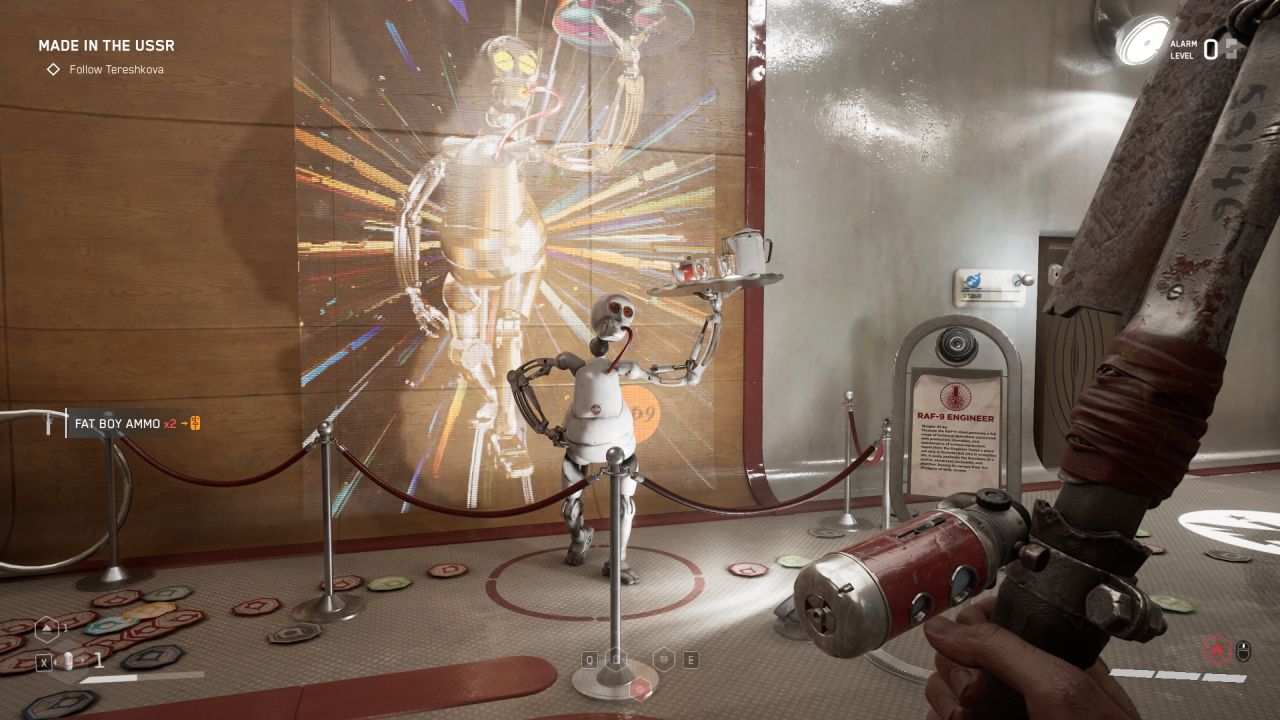
Underground complexes are full of amazing visual lore
To find the saboteur, P-3 will venture inside complexes found underground within the expansive and fertile grounds of Facility 3826. These interiors again draw comparisons to BioShock, both structurally and aesthetically, but this time it's favorable. The world and art design is usually excellent. Laboratory interiors, museums, research facilities, a theatre, a hospital, and more all have good level structure and features that catch the eye. Large art pieces, imposing machinery, gaudy stairways, retro furniture, propaganda posters, and interactive displays all look incredible. It sets up a great fictional world and continues to make the most of it, adding chaos to the mix.
The hostile robots look awesome too. There are humanoids, mini-helicopters, drones, knee-high bipedals with saw blades, spinning ones, and a few bigger types that generally serve as bosses—these have a lot of health. Many were not built for combat, so there are unique designs and attack styles. Not all the enemies are robotic either; some organic flying creatures take control of dead bodies to reanimate them. So in terms of threats, the game has enough variety to keep players engaged.
The weapons P-3 uses against foes include standard guns and several melee types like axes. Sadly, the melee action is clumsy and dangerous. It is easy to get body-blocked into a corner when going toe-to-toe. Also you can get grabbed from close range (starting a QTE) or knocked down. Dodging does avoid attacks but is less effective against groups or in tight spaces. The guns work okay but some targets are bullet sponges. Most of the standard projectile options are here and, due to ammo distribution and reload delays, it is good to have a few types on hand. Each one can be upgraded with larger magazines or bonus damage, although specific upgrades are only found inside Testing Grounds—more on these later. You can add elemental damage to weapons via special cartridges, although these expire quickly and take up limited inventory space.
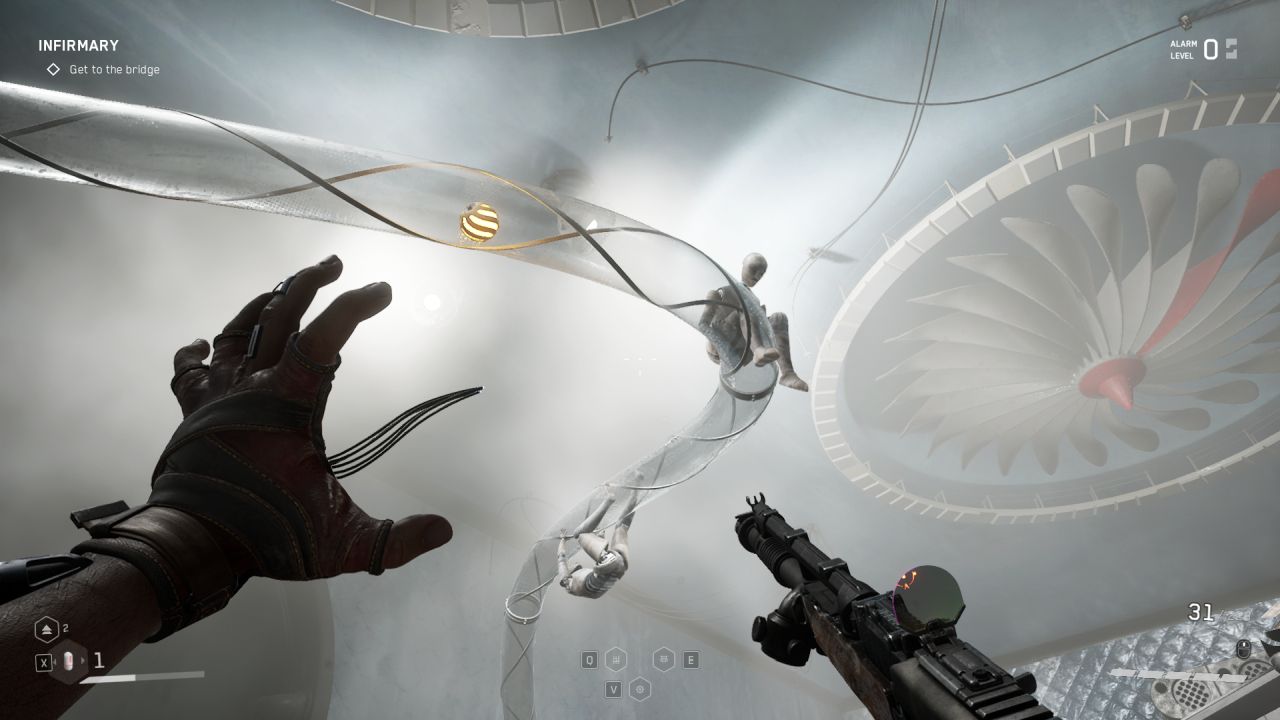
The glove will let P-3 get a handle on things
Your smart glove has a handful of skills that can also deal elemental damage, like BioShock’s plasmids. The electric shock is always equipped, since it is used for puzzles, and it stuns robots effectively. Another is a freeze ray, which slows and even stops targets mid-attack. The shield skill protects against damage briefly. Telekinesis propels groups into the air for hassle-free shooting. And the polymetric jet is a bit like the GLOO cannon in Prey, seizing up enemies and boosting elemental damage. The skills all have cooldowns so you will cycle through the three chosen ones during combat. None feel super powerful, even when fully upgraded, but they are definitely useful. Aside from combat against boss types, which might require swapping gear, exploiting elemental weaknesses comes secondary to efficient use of skills and weapons.
Outside of combat, players will be completing fairly boring fetch tasks inside the complexes. One of these involves collecting four canisters from different corners of a bunker. Another asks P-3 to locate four robot limbs (and a head) to repair a friendly robot. There are a few times when you swim through bulbous polymer material that keeps its shape, to reach higher levels. Pacing is rather terrible in general, with chunks of action that go for too long, dull repetition, and huge story gaps. Rooms where you can save and restock might be far apart too. There is no map of the underground areas—not that they are hard to navigate, but knowing where certain things are would have made for a more pleasant experience.
Once players have completed an underground area, they travel above the surface to get to the next one. This usually means battling robots patrolling on roads or in open fields. All robots on the surface will eventually be repaired by the mini-helicopters that respawn from indestructible nests. Cameras are everywhere and being spotted will bring reinforcements. You can disable all cameras and robots in a region, but this requires accessing the camera system and overloading the relay. Even this is only temporary, as the repair bots will fix the relay after 10 minutes and then mend everything else. Needless to say the outdoor areas are continuously repopulated and moving around is like swimming against the tide.
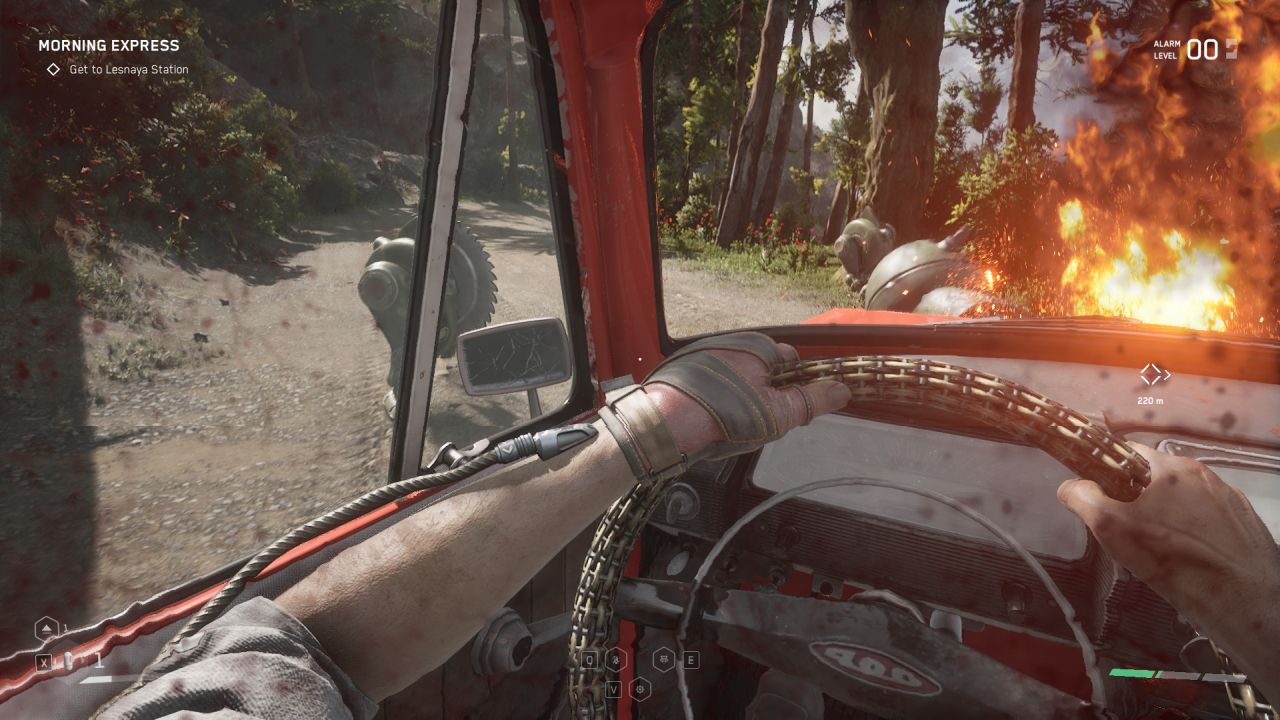
The car's inclination to catch fire might drive you up the wall
The surface is poorly structured and not much fun to explore. There is no fast travel, but there are drivable cars staggered around. If you crash one a few times (or run over too many robots), the jalopy will catch fire, so then you have to leg it because it is the only mechanical contraption that cannot be repaired. Much of the surface is plain, rough, and empty, with rock outcropping and roadblocks that prevent straightforward progress. There are resources inside shacks and other isolated structures, but they are typically not worth the trek.
Testing Grounds might entice some with their weapon upgrades. These are basically dungeons found in the overworld, usually accessed through a door that must be opened with a powered camera. Each Testing Ground is a maze of puzzles with platforming and maybe some combat. They tend to be claustrophobic and unintuitive, unlike the other interior spaces, with rave music to numb players into a trance. Puzzles involve rotating platforms, transferring balls with telekinesis, or flipping magnets to reach the three reward chests. Once the last chest is found, there is a 40-90 second elevator ride back to the surface to contemplate your life choices. The puzzles are not hard but can take time, and trial and error. If the Testing Grounds were shorter and sweeter, they might have been a decent break, but they drag on like nearly everything else.
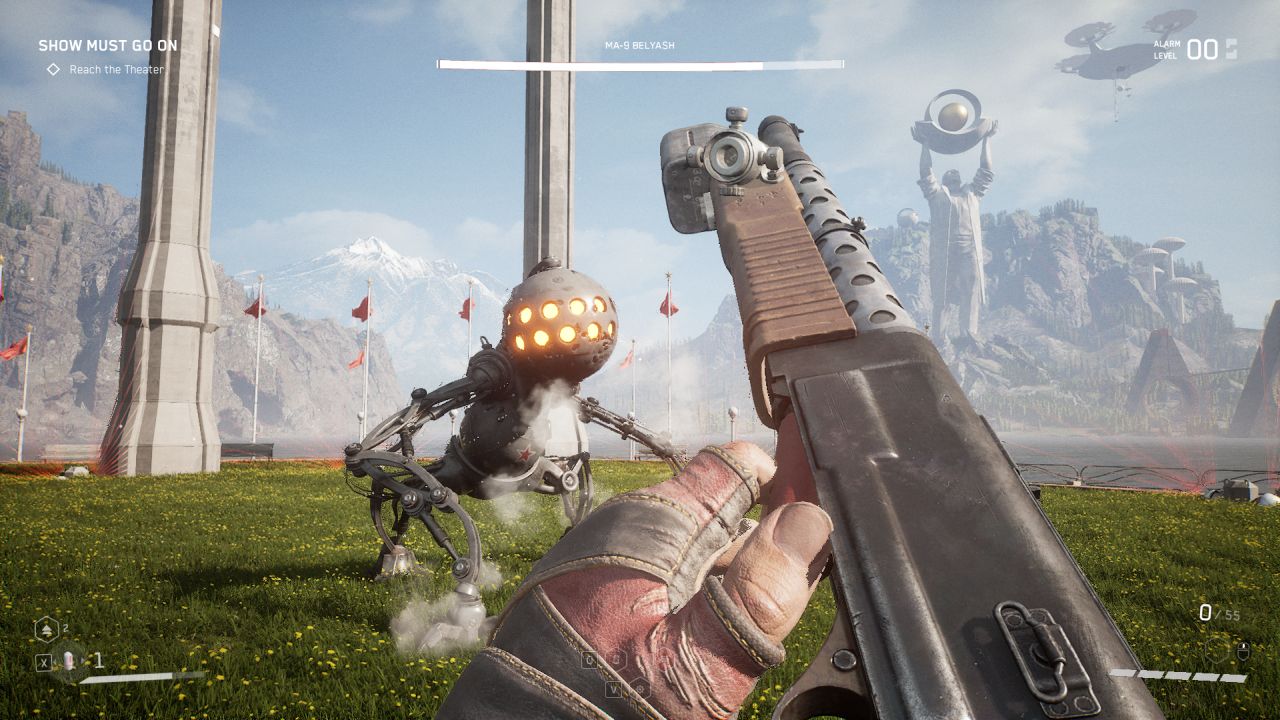
Bosses can endure a lot of damage so bring plenty of ammo
Atomic Heart is clunky in general, and part of this is because it has many actions that waste the player’s time. Like the recent game Scorn, a lot of first-person animations just take too long. Platforming is slow and imprecise. Inventory management could be better. Many doors have locks, which force players to complete a tedious mini-game and then endure the slow animation that removes it. Even looting is slow. You use the smart glove to vacuum up resources from range, but desks and drawers have to be facing the right way, and a few containers take seconds to empty. Some rooms have dozens of similar containers, so you will spend an excessive amount of time vacuuming things up in this game.
Although the game runs great at max settings, it has many technical issues. From AI bugs to movement glitches, it gets worse as the hours progress. A few relays never came back online so all bots in the vicinity remained asleep. This was great for navigation but meant Testing Grounds could not be accessed. AI got stuck frequently, including a few bosses who thought P-3 had turned into a wall. Repair bots often tried to go through locked doors, and enemies partially clipped through walls for easy killing. Even Agent P-3 got stuck halfway into the floor and slid around like a puck on an ice rink. It is disappointing to see so many technical issues in a game that has such high-quality visual design.
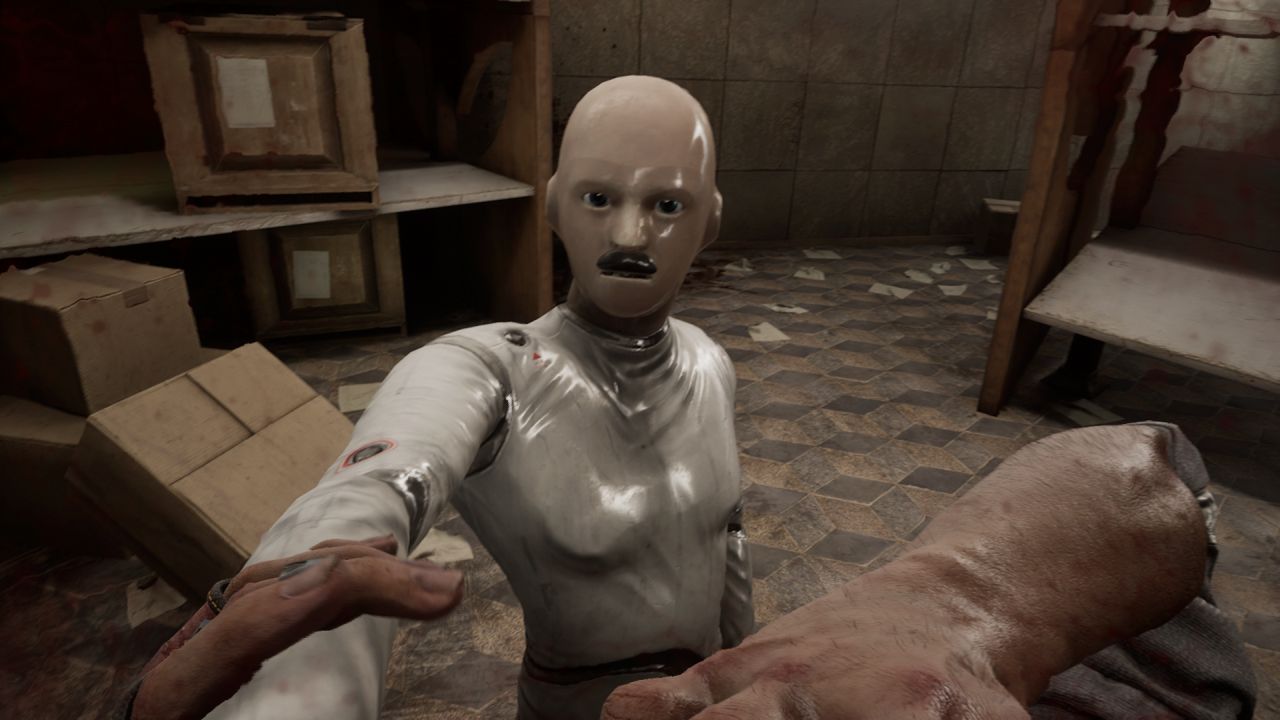
If only the gameplay and story grabbed players as well as its robots
Atomic Heart is a second-rate version of BioShock with unnecessary open-world traversal and countless clunky mechanics. The combat is tolerable, with a mix of melee, guns, and glove skills, but it’s still a bit of a chore to fight the cool robots and mutants. The story switches between stupid to complex in the blink of an eye and regularly just gets in its own way, with consistently poor delivery. Pacing suffers badly due mostly to the unnecessary areas above ground, but other aspects, like collecting resources and navigating Testing Grounds, make the game an unpleasant slog too often. Given Atomic Heart’s amazing setting and interesting themes, it is a shame that it just makes me long for Rapture.
 Comments
Comments














